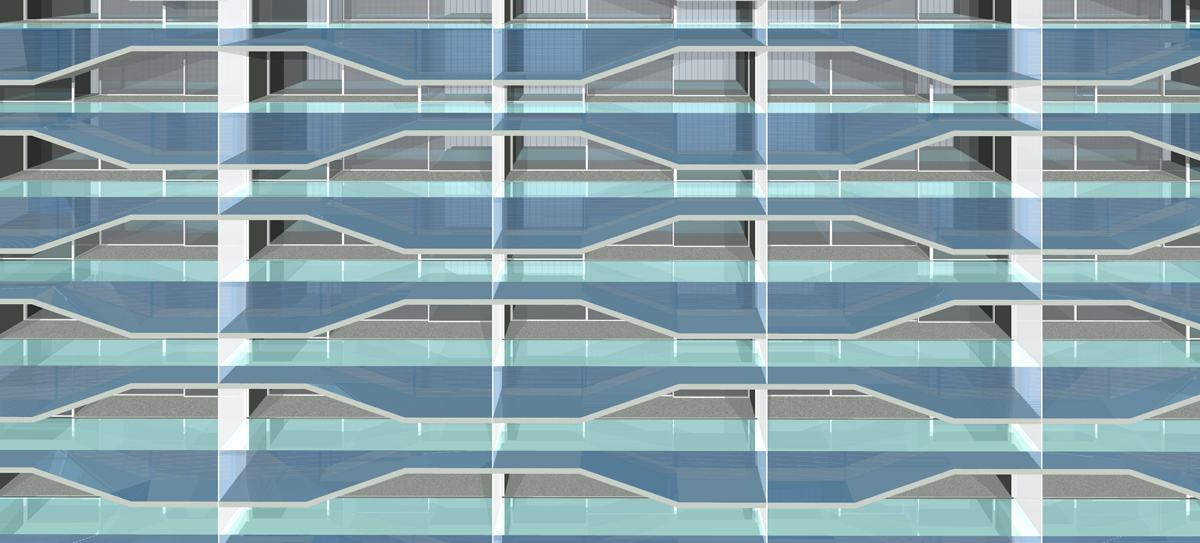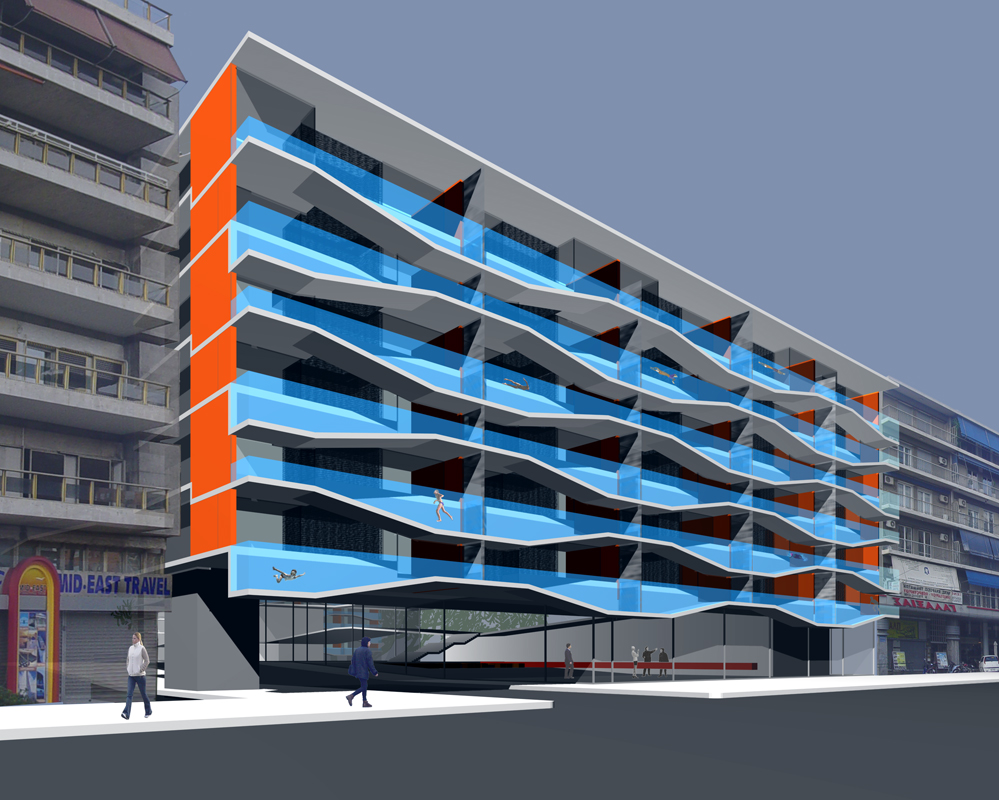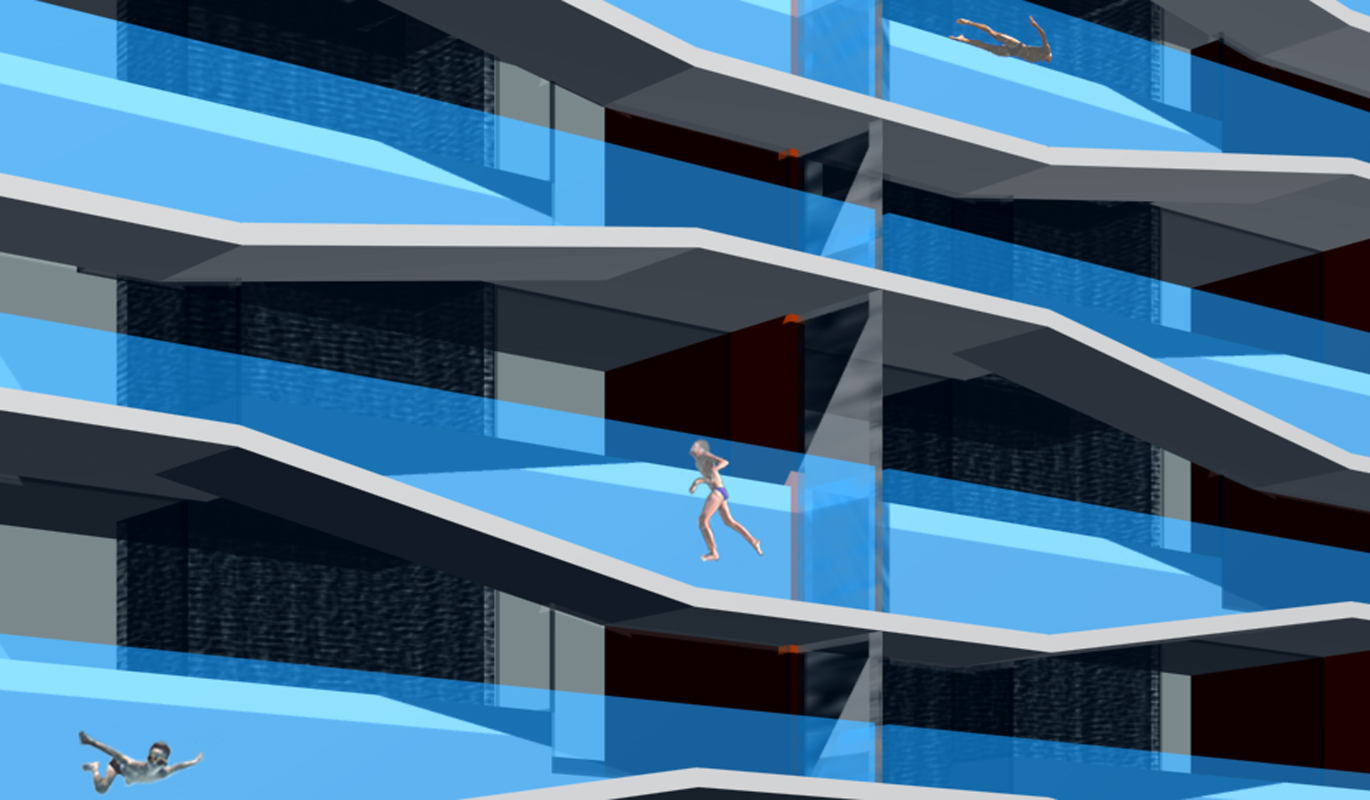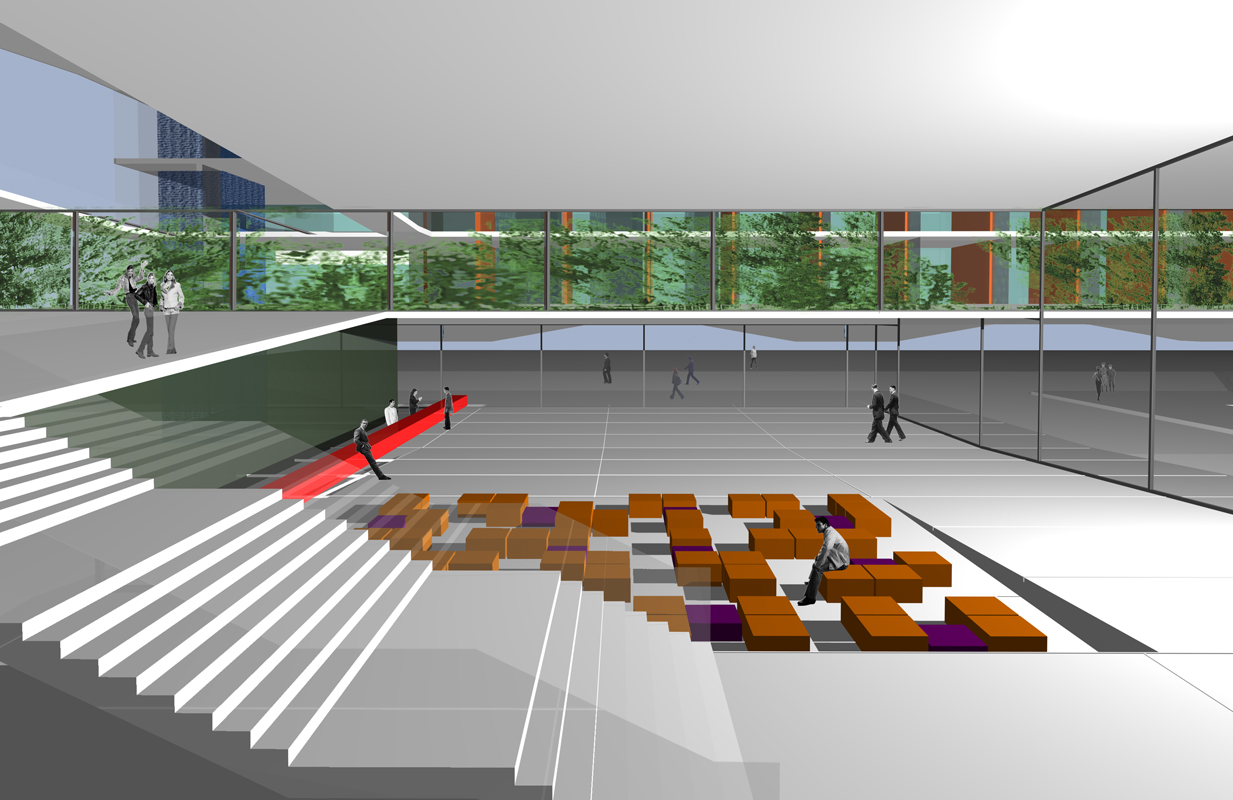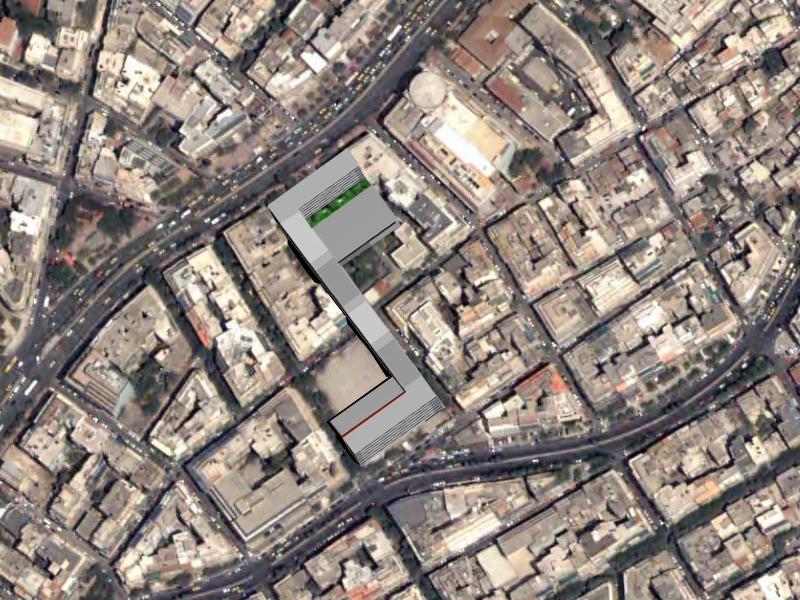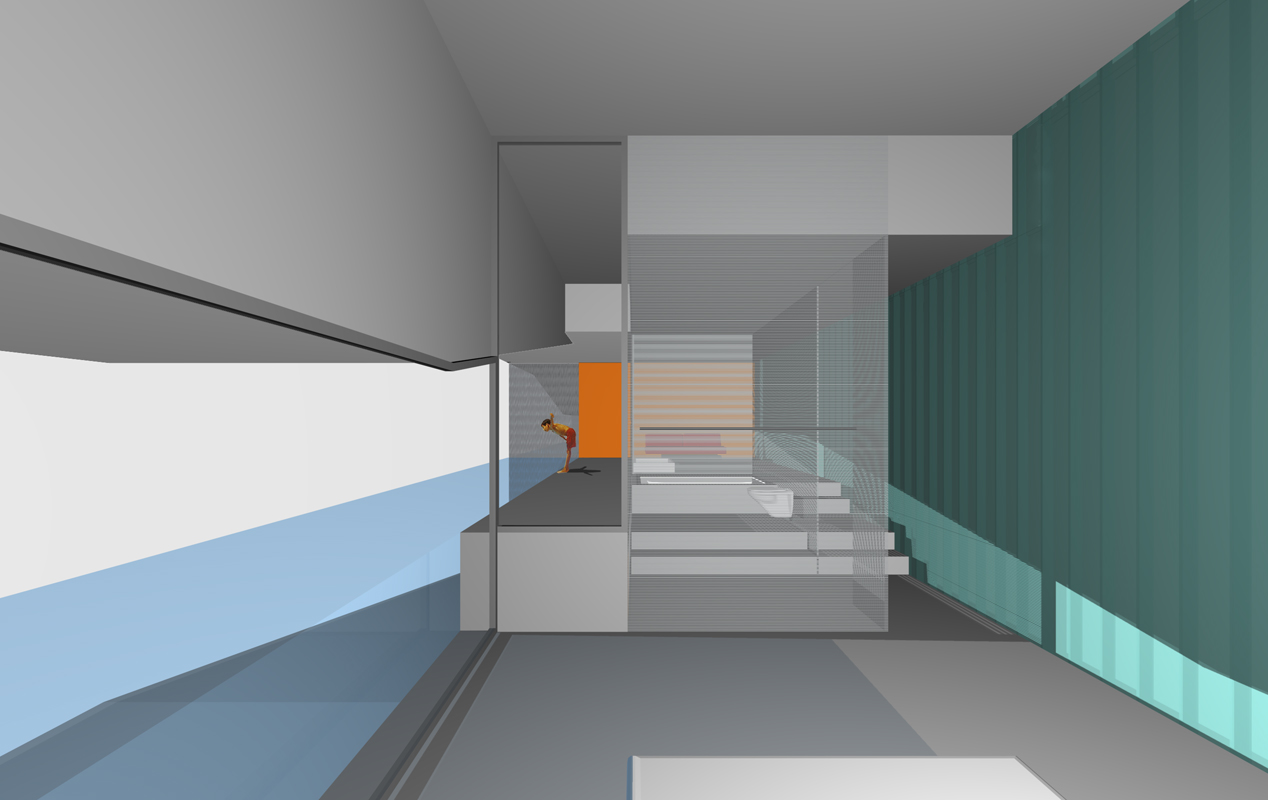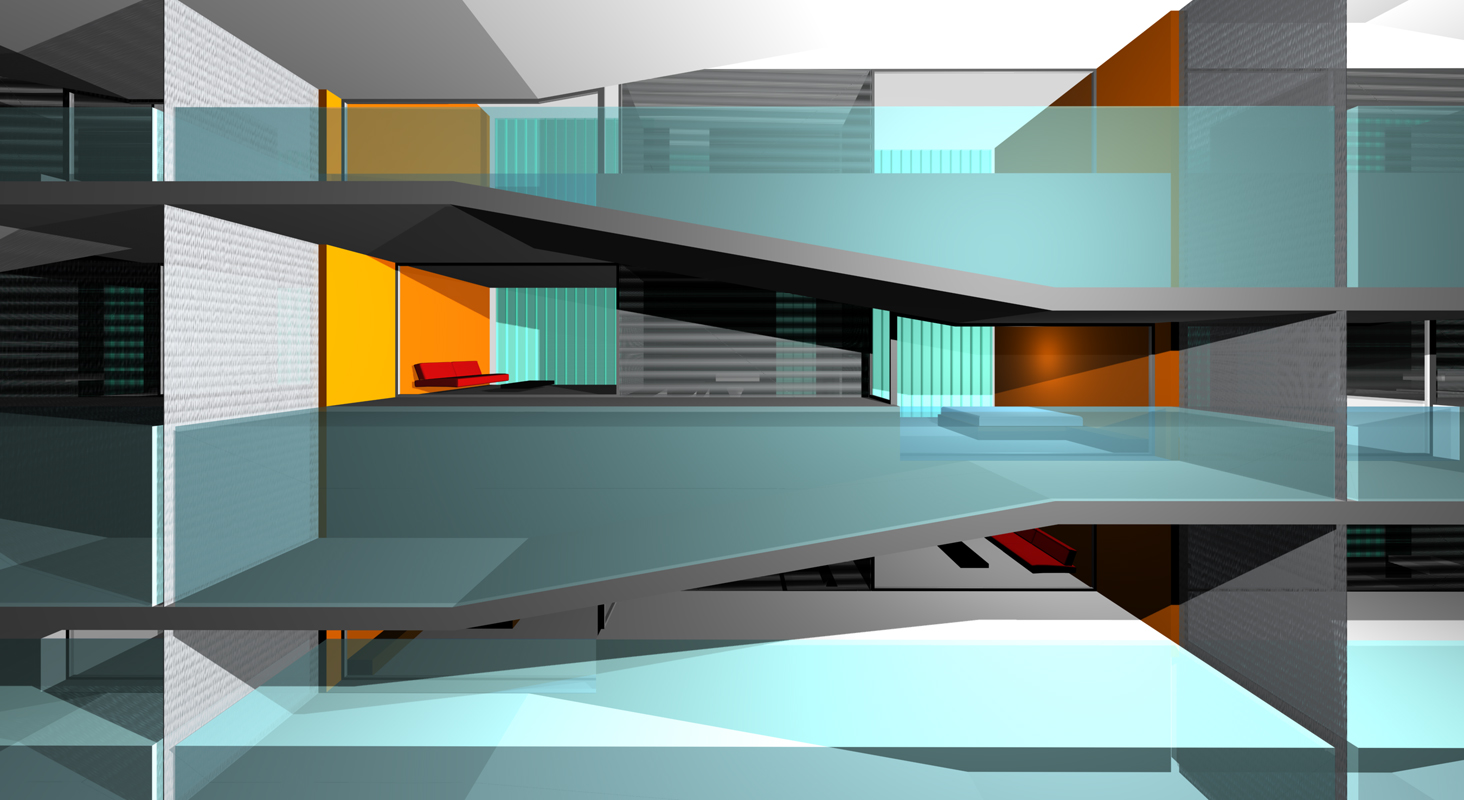INVISIBLE HOTEL
Athens, Greece
Invited competition entry 2005
Invisibility is essentially a question of transparency.
In 1963 Colin Rowe in his article Transparency: Literal and Phenomenal set the framework: “At the beginning of any inquiry into transparency, a basic distinction must perhaps be established. Transparency may be an inherent quality of substance- as in a wire mesh or glass curtain wall, or it may be an inherent quality of organization”. As an organization quality “transparency means a simultaneous perception of different spatial locations”.
The hotel can be literally invisible only as much as its construction materials are transparent. Or it can be phenomenally transparent as an integral part of an ambiguous entity. The transparent city is the field of simultaneous spatial perceptions. Spaces overlap and events concur.
The hotel as resort and hub of urban looseness implies qualities of scale, iconography and program that in many ways do not match with the inarticulate Athenian urban chaos. According to Rowe, the design will have to address these issues as “clearly ambiguous”, rather than settle for an ambiguous clarity.
The in-visible hotel is made of the same materials Athens is made: balconies, narrow building volumes, maximum building code height, congestion. The omnipresent balcony bends and becomes personal swimming pool in the suite wings or interior corridor spiderweb capturing the public functions. Everything happens within extralong volumes 15m wide by 27m high that traverse through city blocks and over streets, on a site that follows existing openings and imagined real estate bargains. The city’s ordinary elements, applied on a different programmatic and finacial level, are remoulded into instruments of leisure.
Hotel and city intermesh in a transparent fabric where figures alternate roles between foreground and background. Visibility retreats in favour of recognition, and the architectural focus shifts from visible object to recognizable pattern.
The design of the hotel is a continuous design of pattern. From section and elevation to an endless series of choices of wire meshes, wallpaper, carpets, napkins. The proposal attempts to consolidate this process on the basis of a single urban concept.
Design team:
Iro Bertaki
Christina Loukopoulou
Costis Paniyiris
Christina Vegiopoulou
Client:
Deste Foundation
curator Memos Filippidis
